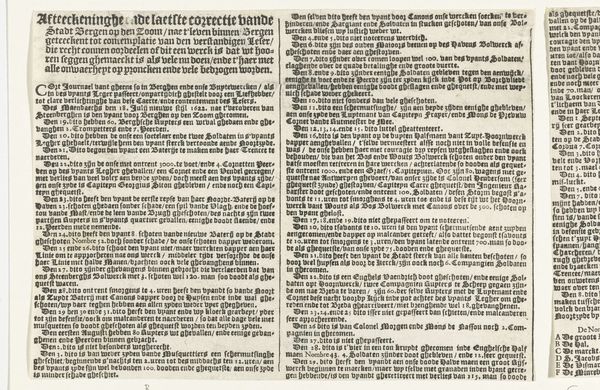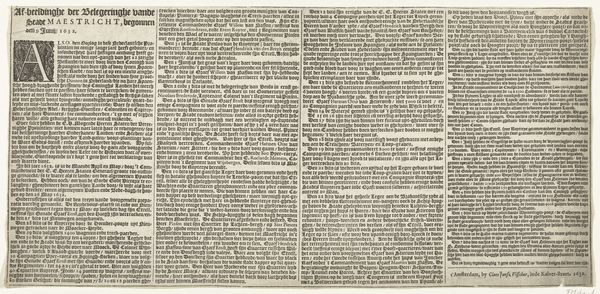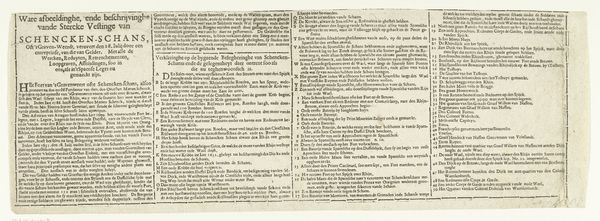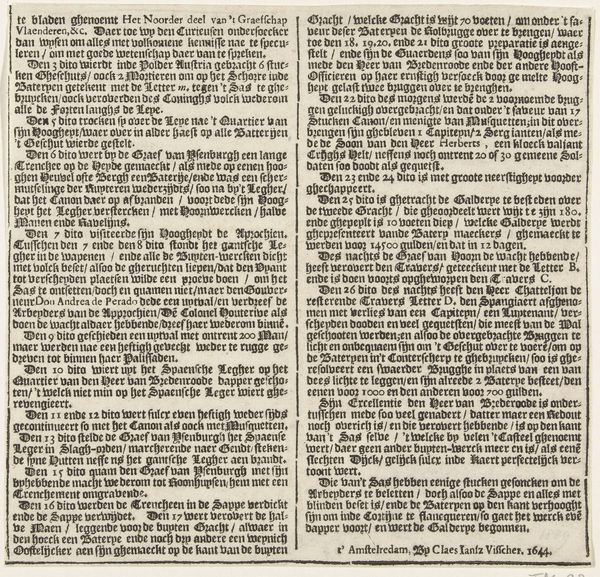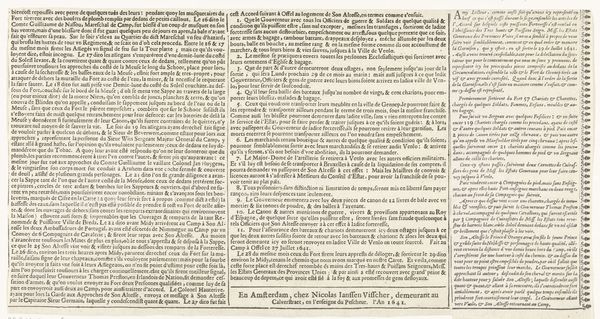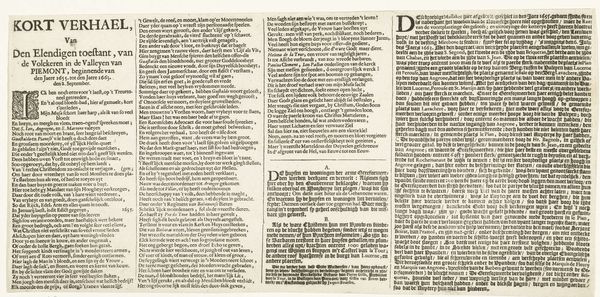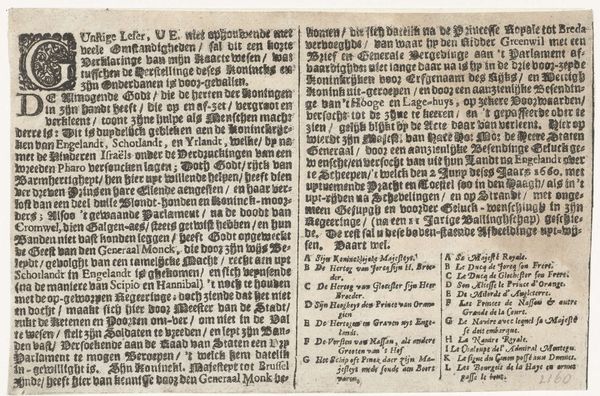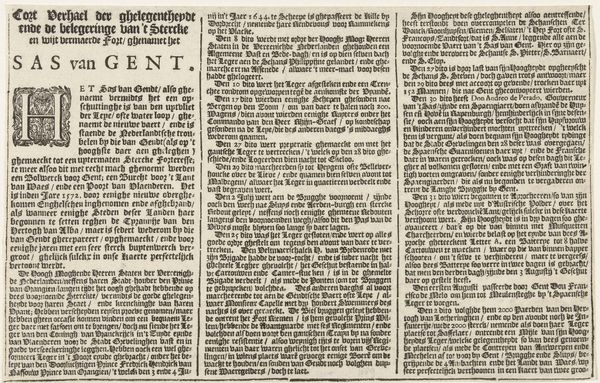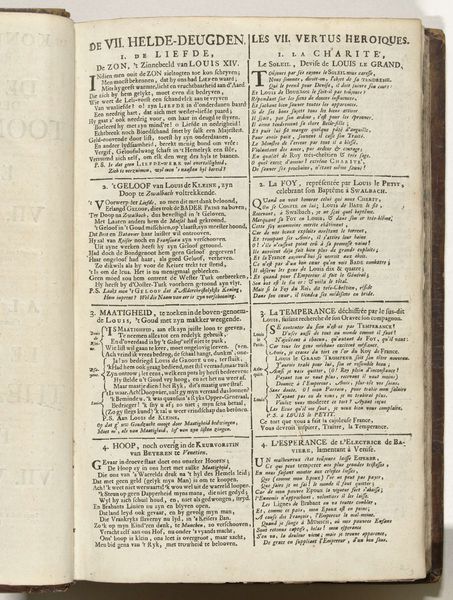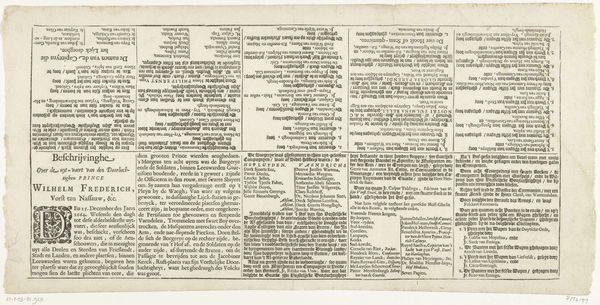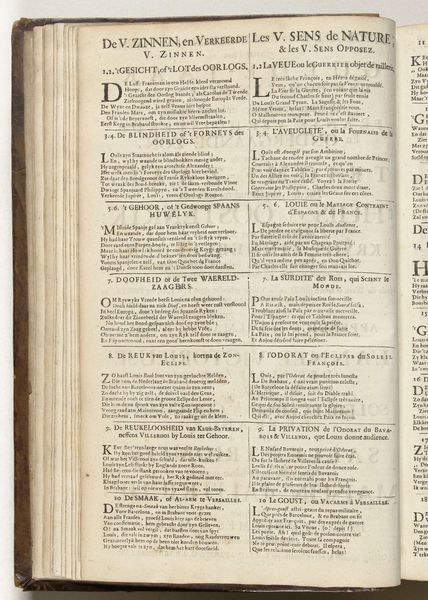
print, paper, typography, engraving
# print
#
paper
#
typography
#
history-painting
#
engraving
Dimensions: height 158 mm, width 370 mm
Copyright: Rijks Museum: Open Domain
Editor: Here we have "Siege of Bergen op Zoom, 1622" created in 1622 by Nicolaes van Geelkercken. It's an engraving on paper. It appears to be mostly text. I’m curious – what symbolic role did text play at this time? Curator: It’s a broadside, meant for wide distribution, a snapshot of current events, yes. But it’s not *just* information. Think of the visual power of language in the 17th century. Words weren't just descriptive; they carried the weight of authority, of religious and political ideology. The sheer act of printing something gave it a kind of permanence and undeniable truth, wouldn't you say? Editor: That’s interesting. It's like the act of printing itself became a symbol of truth? Curator: Exactly! Consider the context. The Eighty Years' War was raging, and this image commemorates a siege. The typography, the layout, these elements reinforce the message, building patriotic feeling. What emotions might a contemporary reader experience looking at this today, thinking about symbols of battle? Editor: So, it's about memory, not just the event itself? I'm trying to connect the visual presentation and its intention with a very particular time and cultural setting. Curator: Precisely! The symbolism inherent in disseminating this “news” through a print magnifies the power of communication at the time, reminding everyone about their shared history and experience, in a way that reflects power and knowledge. Editor: It almost gives new meaning to "the pen is mightier than the sword." Thanks. Now I see how an ostensibly simple historical print embodies many other things beyond its original use. Curator: Indeed, the layers of symbolism continue to evolve, reminding us that images—and words—carry meanings far beyond their initial context.
Comments
No comments
Be the first to comment and join the conversation on the ultimate creative platform.
